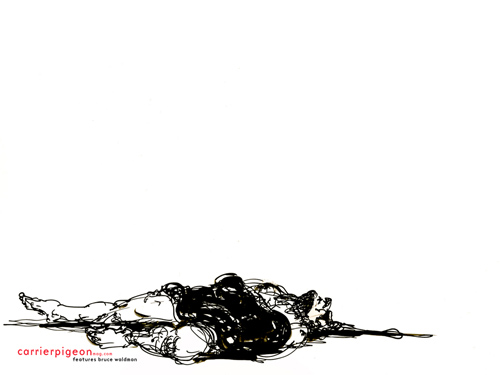AVANT GARDE was published from just late 1968 until the summer of 1971. Publication was ceased largely because Ginzburg went to prison for an obscenity conviction related to his EROS magazine. There were only fourteen issues of AVANT GARDE. The best remembered among them were those including texts by Norman Mailer, Arthur Miller and Peter Schjeldahl; and the issues incorporating John Lennon’s erotic lithographs, Picasso’s erotic gravures, and Bert Stern’s day-glo serigraphs of Marilyn Monroe.
Bert Stern’s then experimental prints of Monroe were based on his now iconic photographic study of her shot at the Bel Air Hotel in Los Angeles in June 1962. Monroe was dead a couple of years later never having posed again for such an essay. Stern remained “preoccupied” with her though and created the stunning serigraphs authentically reproduced in AVANT GARDE some five years after Monroe’s death.
The twelve-page spread of Stern’s prints appeared in Issue 2, March 1969. The feature was entitled “The Marilyn Monroe Trip”, and brilliantly laid out on the magazine’s 11”x11” pages. Both the cover of the magazine and the serigraph reproductions were printed in a process known as ‘sheet fed gravure’ which was exceptionally well-suited for duplicating the multi-screen original serigraphs.

Announced in this issue was the magazine’s “NO MORE WAR” poster contest the results of which were published in Issue 5. Among the judges of the contest entries were photographers Richard Avedon and Edward Steichen, printmaker Leonard Baskin, sculpture Alexander Calder, and artists Milton Glaser, Robert Motherwell and Larry Rivers.
Also included in the March 1969 issue was the very cool fiction piece “The Visitor”, by Roald Dahl which first appeared in a condensed form in Hugh Hefner’s Playboy Magazine in 1965. Dahl’s short story was illustrated with drawings by Etienne Delessert whose distinctive, sometimes edgy and always clever graphic art ranks among the best of his day.

Issues of AVANT GARDE, fortunately, are not particularly rare today and can be found in used book stores and on-line, often, in the $10-$20 range for copies in fairly good condition. A value, I believe, not to be overlooked at these prices for the remarkable quality and enjoyment this cultural arts oriented publication will bring over and over again.
--Stephen A. Fredericks




































